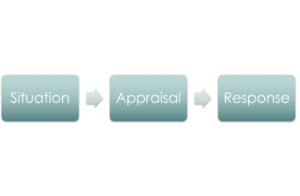As I was facilitating an executive team session this week, I observed a common trait among leaders. Two leaders on the team created triangulation or put others in the middle instead of going directly to the person. The behavior is passive aggressive.
Leaders you have four choices. These four choices can increase or decrease the respect of your team.
1.) Passive: A passive response can be expressed when one party just defers or does not express their opinion. This approach can be countered by taking a side vs. being neutral. A leader is not neutral.
2.) Passive Aggressive: Passive aggressive is withholding your opinion or desire and then lashing out with emotion. Passive aggressive leaders may also pair up with others and have them take the responsible action. Many time passive aggressive behavior occurs when a person says “Yes” on the outside and “No” on the inside. We call this a lack of ‘inside’ vs. ‘outside’ match.
3.) Aggressive: Aggressive individuals are also considered bullies. They promote their opinion as the only viable option. People that spend time with the aggressive will sometimes complain that the person scares them or pushes too hard. An aggressive leader is not inclusive and may struggle with buy-in. Team members may not voice concerns for fear of reprisal.
4.) Assertive: The assertive person states their truth, their opinion and their viewpoint. The assertive person listens to their ‘gut’ and makes that thought visible to the team. The assertive person has a strong sense of self and clearly understands where they ‘start’ and ‘stop’ and where others ‘begin’ and ‘end.’ The assertive person relies heavily on their vision and the process.
Referring back to the example about the executive team, an assertive response would have been to give the feedback directly vs. running to another to disseminate the information.
The assertive response is our aspiration, yet it can be challenging to always be assertive. You can improve your assertiveness skills. Assertiveness begins by improving our ‘default’ response.
Consider the picture below: it would be easy to think that we simply experience a situation and respond. In actuality, we appraise the situation before we respond. The appraisal is set like a computer default setting. We typically appraise situations toward the catastrophic or fairly high threat level. This poor appraisal leads us to be passive, aggressive or passive aggressive.
The brain is reverting to the caveman days way of functioning by looking out for potential predators to run from or attack. Said another way, your brain has a very sensitive sensor looking out for situations that might get us in trouble. This works great when we are about to be attacked in an alley or when a car pulls in front of us. In reality, this rarely happens. There is hope. Your appraisal skills can improve by pausing to truly assess the risk.
For example: You are in a meeting and a person looks at you with a less than encouraging demeanor. Your default appraisal is that this person does not approve of you. Instead, it could be any number of things not associated with you.

The next step is for you to review your beliefs. Our beliefs can be so disruptive. If you have a belief that you must be liked by everyone that belief will only lead to frustration because it is impossible to know this or even experience this. A more true belief would be – “It would be nice if they like me, but my goal is to be assertive and effective not to make sure Sally approves of me. I approve of myself.”
In short, to improve assertiveness, I suggest the following 2 steps:
1.) Improve Your Appraisal Skills: Complete a “Pause and Assess” journal for the week. Write down how you appraised situations in the past 30 days.
2.) Beliefs Audit: Just create a basic “T” chart – on the left is a column titled “False Beliefs” and on the right a column titled “True Beliefs.” You will be amazed at the beliefs you hold sacred.
